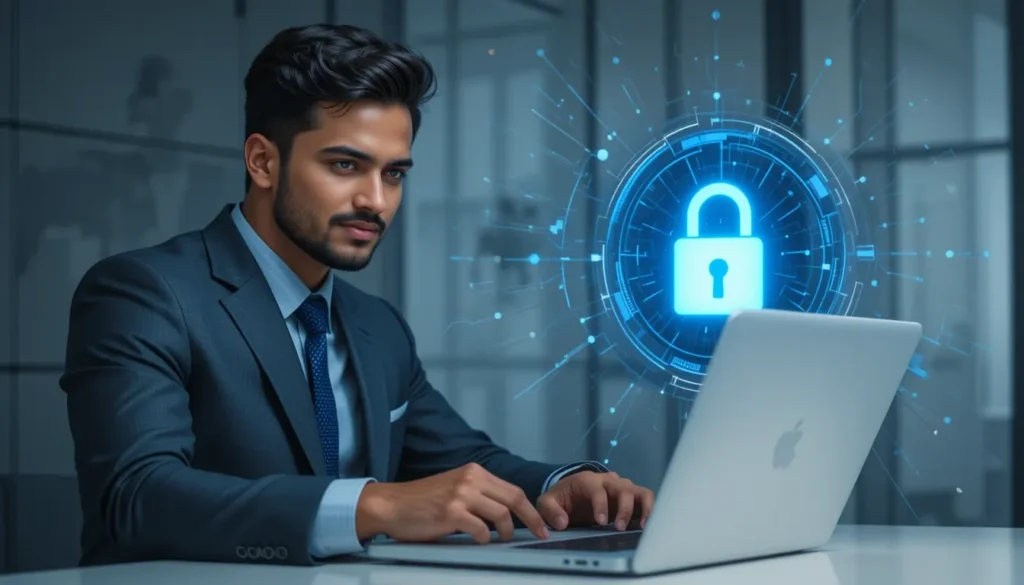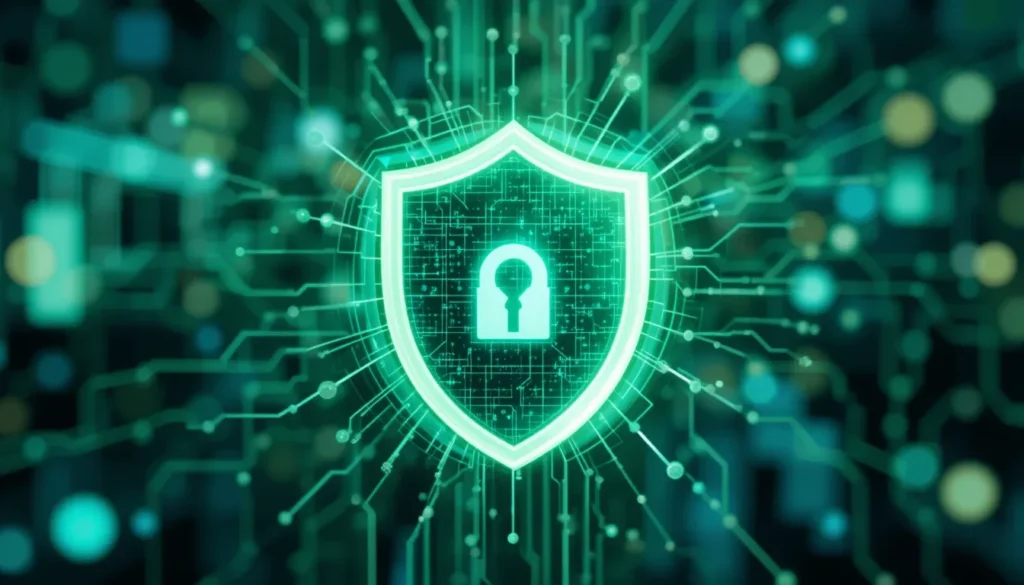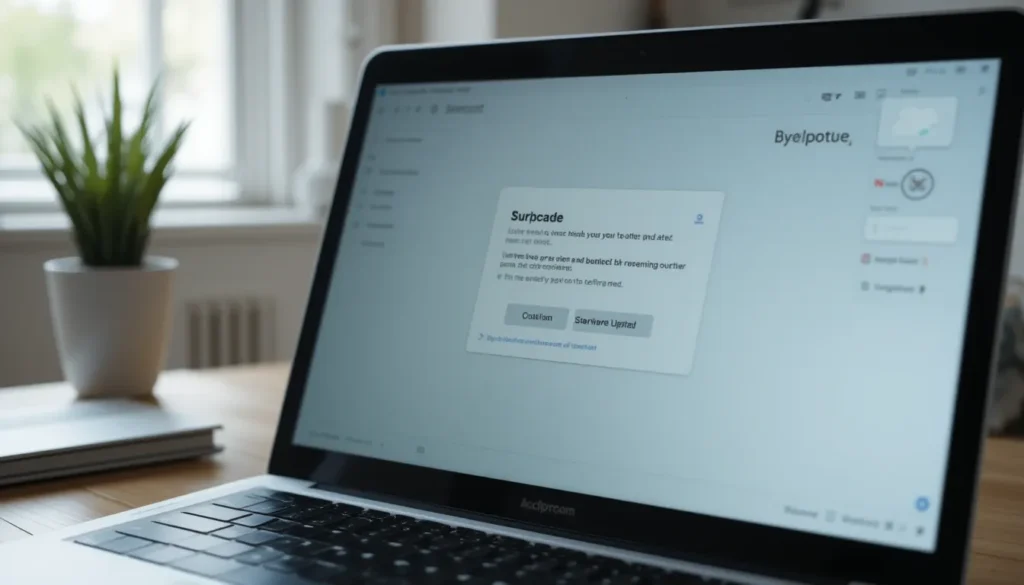Cybersecurity Tips: In today’s digital world, our personal data is constantly at risk. With the growing number of cyber threats, safeguarding your sensitive information has never been more important. From identity theft to financial fraud, the consequences of a data breach can be devastating. In this article, we will explore 3 essential cybersecurity tips to keep your personal data safe. These practical tips will help you protect yourself from online threats and maintain your privacy, all without needing to be a tech expert.
In the age of technology, protecting your personal data is crucial. Cybersecurity threats are everywhere, and it’s essential to take steps to safeguard your information. In this article, we will highlight three fundamental cybersecurity tips that can help keep your data secure from hackers, phishing scams, and other online dangers. Read on to learn how you can strengthen your digital security and stay one step ahead of cybercriminals!
Use Strong and Unique Passwords
The Importance of Strong Passwords

One of the most basic yet essential steps in protecting your personal data is creating strong, unique passwords. Using weak or easily guessable passwords makes it much easier for hackers to gain access to your online accounts. Common mistakes include using simple passwords like “123456” or reusing the same password across multiple sites. These habits put your data at risk and leave you vulnerable to cyberattacks.
A strong password should be at least 12 characters long and include a combination of upper and lowercase letters, numbers, and special characters. This makes it far more difficult for cybercriminals to guess or crack your password. Additionally, avoid using obvious information, such as your name or birthdate, which can be easily discovered through social media or other online platforms.
Use a Password Manager for Convenience

Managing multiple strong passwords can be overwhelming, especially when you have dozens of accounts. This is where a password manager can help. A password manager securely stores all your passwords and generates strong, unique ones for each of your accounts. By using a password manager, you don’t have to remember every single password, and you can ensure that your passwords are both secure and unique.
Many password managers come with additional features, such as two-factor authentication (2FA) integration, which adds an extra layer of protection. Popular password managers like LastPass, Dashlane, and Bitwarden offer both free and premium versions with robust security features. Using a password manager significantly reduces the risk of using weak passwords or repeating passwords across multiple sites, thereby enhancing your overall cybersecurity.
Enable Two-Factor Authentication (2FA)
What is Two-Factor Authentication (2FA)?

Two-factor authentication (2FA) is one of the most effective ways to secure your online accounts. 2FA adds an extra layer of security by requiring not only your password but also a second form of verification before granting access to your account. This could be a code sent to your phone via text, an authentication app like Google Authenticator, or even biometric authentication such as a fingerprint scan.
By enabling 2FA, you make it much harder for hackers to access your accounts, even if they manage to obtain your password. This additional layer of protection is especially important for high-risk accounts, such as email, banking, and social media accounts, where sensitive personal information is stored.
How to Enable Two-Factor Authentication

Enabling 2FA is a straightforward process and is available on most major online platforms, including Google, Facebook, and banking apps. To enable 2FA, go to the security settings of your account and look for the “Two-Factor Authentication” option. Follow the prompts to link your phone number or authentication app, and you’ll be required to enter a second factor of authentication each time you log in.
Although 2FA may seem like an extra step, it is an incredibly effective way to safeguard your accounts. Even if someone obtains your password through a data breach, they will still be unable to access your account without the second factor of authentication, making it an invaluable tool for protecting your personal data.
Be Cautious of Phishing Scams
What are Phishing Scams?

Phishing scams are one of the most common forms of cybercrime. In a phishing scam, hackers impersonate legitimate companies or individuals to steal sensitive information, such as login credentials or credit card numbers. These scams often come in the form of emails, text messages, or phone calls that appear to be from trusted sources, like banks, social media platforms, or even government agencies. The goal of the scam is to trick you into providing personal information by clicking on a malicious link or downloading an infected attachment.
Phishing emails may appear official, with logos and branding from legitimate companies, but there are always telltale signs of fraud. Common signs of phishing scams include poor grammar, urgent requests for personal information, and suspicious links. Always double-check the sender’s email address or phone number to ensure it matches the official contact information of the organization it claims to represent.
How to Avoid Phishing Scams

To avoid falling victim to phishing scams, always be cautious when receiving unsolicited messages or emails. Never click on links or download attachments from unknown sources. Instead, manually visit the website by typing the URL into your browser. If the message is from a company you trust, contact them directly through their official customer support channels to verify the request.
Another great way to protect yourself from phishing attempts is by installing anti-phishing software, which can help detect malicious links and warn you before you click on them. Many modern web browsers also come with built-in phishing protection, but it’s still essential to remain vigilant and cautious when dealing with unsolicited messages.
Keep Your Software and Devices Updated
Why Keeping Software Up-to-Date is Crucial

Keeping your software and devices updated is one of the most important cybersecurity practices to ensure that your personal data remains safe. Software developers regularly release updates to patch security vulnerabilities and improve functionality. When you fail to install these updates, your device becomes an easy target for hackers looking to exploit outdated software.
Most updates include critical security patches that prevent cybercriminals from gaining access to your personal data. Whether it’s your operating system, browser, apps, or antivirus software, make sure to enable automatic updates or check for updates regularly. Cyber attackers often take advantage of known security flaws, so ensuring that your devices are up-to-date reduces the chances of your data being compromised.
Update Your Operating System and Apps
Both Windows and macOS offer security updates that help fix vulnerabilities in the operating system. Similarly, mobile devices running Android or iOS also receive regular security patches that protect against malware and other threats. On your smartphone, ensure that you regularly check for updates in your device’s settings and enable automatic updates.
Additionally, apps are another area where outdated software can pose a risk. Ensure that all your apps are updated regularly through the Google Play Store or Apple App Store. Developers frequently release updates to address security vulnerabilities, and keeping your apps up-to-date is an easy way to safeguard your personal data.
My Personal Experience with Cybersecurity Tips
A few months ago, I received an email that looked like it was from my bank. It urgently requested that I verify my account information due to a “suspicious” activity alert. At first glance, it seemed legitimate, but something didn’t feel quite right. Thankfully, I had learned about phishing scams and knew better than to click on any links or provide my information. Instead, I called my bank directly using the contact number on their official website to confirm that the email was a scam.
Additionally, I had recently enabled two-factor authentication on all my important accounts, and I felt reassured knowing that even if someone had my password, they wouldn’t be able to access my accounts without the second form of verification. These small but powerful cybersecurity habits gave me peace of mind and helped keep my personal data safe from harm.
FAQs on Cybersecurity Tips to Keep Your Personal Data Safe
Q1: How do I create a strong password?
A1: To create a strong password, use a combination of uppercase and lowercase letters, numbers, and special characters. Make sure your password is at least 12 characters long, and avoid using personal information like your name or birthdate.
Q2: What is two-factor authentication, and why is it important?
A2: Two-factor authentication (2FA) is a security feature that requires two forms of identification before granting access to your account. It provides an extra layer of protection, making it harder for hackers to access your account even if they have your password.
Q3: How can I avoid phishing scams?
A3: To avoid phishing scams, never click on links or download attachments from unknown sources. Always verify suspicious emails or messages by contacting the company or individual directly. Install anti-phishing software for added protection.
Q4: Why should I keep my software and devices updated?
A4: Keeping your software and devices updated is essential to patch security vulnerabilities that cybercriminals could exploit. Regular updates help protect your personal data from malware, viruses, and other cyber threats.
Conclusion
Protecting your personal data from cyber threats is more important than ever. By following these three essential cybersecurity tips – using strong and unique passwords, enabling two-factor authentication, and being cautious of phishing scams – you can significantly reduce the risk of your personal information being compromised. In addition, keeping your devices and software up to date ensures that you’re always one step ahead of cybercriminals. Stay safe, and remember that a little extra effort today can help safeguard your privacy for years to come!
